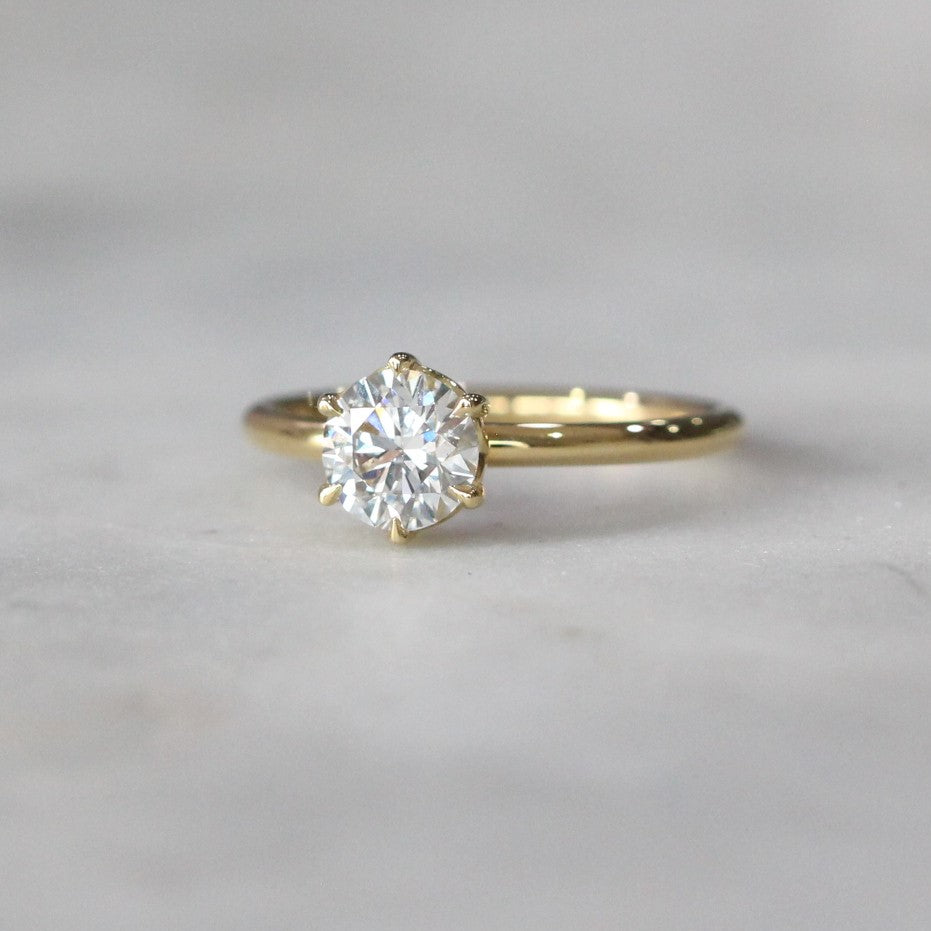The allure of sparkling gemstones has captivated people for centuries, and in recent years, both moissanita and man-made diamonds have emerged as popular alternatives to traditional mined diamonds. Each of these options has its unique advantages, but they also come with their own set of disadvantages. In this article, we will explore the disadvantages of moissanita desventajas in comparison to man-made diamonds, providing a comprehensive understanding of the drawbacks associated with each.
Moissanita and Man-Made Diamonds
Before delving into the disadvantages, it’s essential to understand what moissanita and man-made diamonds are.
What is Moissanita?
Moissanita is a gemstone composed of silicon carbide. Discovered by French chemist Henri Moissan in 1893, natural moissanite is extremely rare, but today, most moissanite available in the market is lab-created. Moissanita is known for its brilliance and fire, often compared to diamonds in its appearance.
What are Man-Made Diamonds?
Man-made diamonds, also known as synthetic or lab-grown diamonds, are diamonds that are produced in a controlled environment rather than being mined from the earth. These diamonds have the same physical and chemical properties as natural diamonds, making them virtually indistinguishable from mined diamonds.
Disadvantages of Moissanita
While moissanita offers a range of appealing qualities, such as affordability and impressive brilliance, it does come with certain disadvantages:
1. Lesser Durability Compared to Diamonds
Moissanita has a hardness of 9.25 on the Mohs scale, which makes it highly resistant to scratches and suitable for daily wear. However, it is not as hard as diamonds, which have a hardness of 10 on the Mohs scale. This difference in hardness means that moissanita can be more prone to scratches and damage over time, especially if subjected to harsh conditions.
2. Different Brilliance and Fire
Moissanita is known for its exceptional fire and brilliance, often exhibiting more sparkle than diamonds. While this can be an advantage for some, it can also be a disadvantage for those who prefer the classic, subtle sparkle of diamonds. The increased fire and brilliance of moissanita can sometimes make it appear overly flashy or artificial.
3. Color Variations
Moissanita is available in various color grades, with some stones exhibiting a yellow or greenish hue. Although higher-quality moissanite can be colorless, many options may have noticeable color tints. In contrast, man-made diamonds can be created to match any color grade, including D (colorless), and offer a wider range of color options.
4. Perceived Value and Resale
Moissanita, despite being a beautiful gemstone, is not valued as highly as diamonds in the market. This perception can affect the resale value of moissanite jewelry. While diamonds tend to retain their value better over time, moissanita may not hold the same level of financial worth, which can be a consideration for those looking to invest in their jewelry.
5. Less Recognition
Moissanita is less recognized than diamonds in the world of fine jewelry. As a result, people may not immediately appreciate the beauty and value of moissanita compared to diamonds. This can be a disadvantage for those who want their jewelry to be widely understood and admired.
Disadvantages of Man-Made Diamonds
Man-made diamonds offer many benefits, including ethical sourcing and affordability, but they are not without their own set of disadvantages:
1. Higher Cost Compared to Moissanita
Although man-made diamonds are generally more affordable than natural diamonds, they are still more expensive than moissanita. This higher cost can be a disadvantage for those seeking a more budget-friendly option.
2. Potentially Limited Availability
Man-made diamonds are not as widely available as moissanita. Finding specific sizes or qualities of man-made diamonds may require more effort and may involve working with specialized jewelers.
3. Market Perception
While man-made diamonds are becoming more accepted, there can still be a stigma associated with them. Some people may view them as less valuable or less desirable compared to natural diamonds, affecting their perceived worth.
4. Resale Value
Like moissanita, man-made diamonds may not hold their value as well as natural diamonds. The market for synthetic diamonds is still evolving, and their long-term resale value remains uncertain.
5. Environmental Impact
Although man-made diamonds are considered more environmentally friendly than mined diamonds, they are not entirely free from environmental impact. The production of lab-grown diamonds requires significant energy and resources, which can contribute to environmental concerns.
Conclusion
Both moissanita and man made diamonds offer attractive alternatives to natural diamonds, each with its own set of advantages and disadvantages. Moissanita’s lower cost and impressive brilliance are tempered by its lower durability and less market recognition. Man-made diamonds, while offering a closer match to natural diamonds in terms of physical properties, come with a higher cost and potential market perception issues. Understanding these disadvantages can help consumers make informed decisions based on their preferences, budget, and values.

